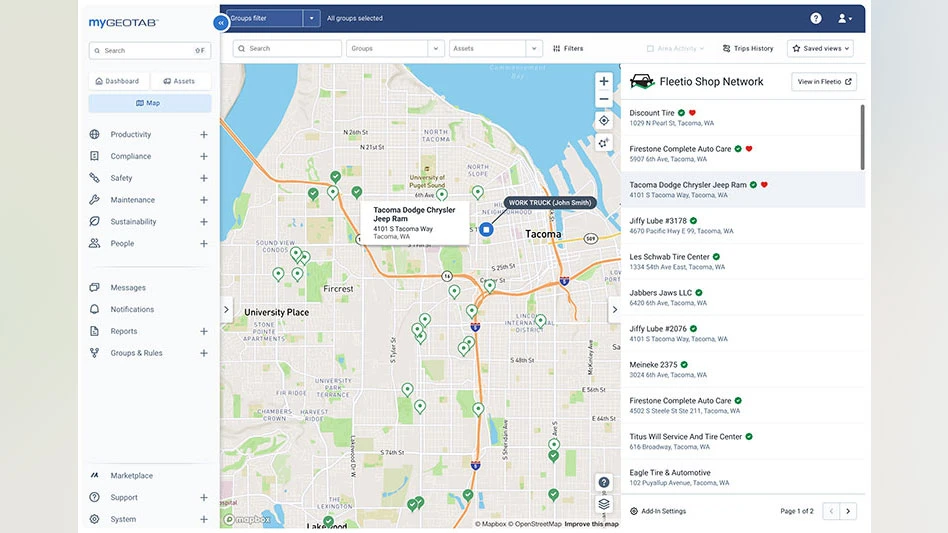
Google’s new offices inside historic One Market Plaza in downtown San Francisco reflect its commitment to sustainable building design.
The goal for the redesign of the 250,000 square feet of office space the web search engine company is leasing in the 43-story Spear Tower is to meet the green building standards required for certification under the Leadership in Energy and Environmental Design (LEED) v4 rating system.
To meet the criteria for Construction Waste Management credits, between 50 to 75 percent of the construction debris that comes out of the building must be diverted away from landfills.
MEETING DIVERSION GOALS
During demolition, DPR Construction, Redwood City, California, helped meet those waste diversion goals by finding ways to recycle more than 50 percent of the construction waste that came out of the 40-year-old building during the first three phases of the renovation project.
Through past success with the Armstrong Ceiling Recycling Program, developed ceiling and flooring manufacturer Armstrong World Industries, Lancaster, Pennsylvania, DPR knew it would be able to recycle the ceilings that were removed from the building. The Ceiling Recycling Program enables building owners and contractors to salvage ceiling panels from demolition and renovation projects and return them to the nearest Armstrong plant as an alternative to landfill disposal. Armstrong uses the reclaimed ceilings to make new ceiling products.
After removing the ceiling panels, DPR placed them in containers furnished by San Francisco-based Recology, which provides trash collection services to commercial buildings in that city’s downtown. When the containers were full, Recology delivered the ceiling panels to Houston-based Waste Management, an Armstrong recycling partner with a facility in nearby Oakland. There they were processed and made ready for pickup by Armstrong.
COMPETITORS AND PARTNERS
Despite the fact that the two trash hauling companies are direct competitors, DPR convinced the business rivals to work together the make the recycling project a success. “This is a huge breakthrough with getting two direct competitors to work together to help us achieve this goal,” says Mike Scott, project manager, DPR Construction. “Hopefully, this will open the door to more ceiling recycling on future projects.”
Working with the Armstrong Recycling Center, DPR was able to recycle 101,859 square feet of discarded ceilings. By recycling the ceilings instead of dumping them in a landfill, DPR diverted roughly 50 tons of construction waste—the equivalent of more than 5,000 tires—away from landfills.
EXTRA CREDIT
“We achieved a 100 percent diversion rate for the acoustical ceilings,” says Melody Schumacher, LEED accredited professional, of Huntsman Architectural Group in San Francisco, the design firm for all five phases of the project.
“The contractor was able to use that as documentation for the Construction Waste Management credit,” adds Schumacher who is managing the LEED documentation process. “The fact that Armstrong was willing to take back 100 percent of the old ceiling panels helped us achieve that.”
In addition to the acoustical ceilings, DPR was also able to achieve a 100 percent diversion rate for the carpeting and metal wall framing studs that were removed from the building.
“DPR is a very green contractor,” says Scott. “We recycle everything we can to its highest value.”
With three of the five phases of the project now complete, Phase 1 has already been LEED v4 certified and LEED documentation for Phase 2 has been submitted. “That’s a huge achievement for a 1976 building,” says Schumacher. “LEED v4 is really hard to get.”
With two more phases to go, DPR is already looking to Armstrong to reclaim the more than 70,000 square feet of ceiling tiles that remain. When the renovation project is complete, DPR will have diverted approximately 172,000 square feet of ceiling tiles—the equivalent of roughly 8,600 tires—away from landfills.
Recycling the ceiling panels and other demolition debris removed during the construction of its new offices at One Market Plaza helps Google move closer to its aspirational goal of diverting 99 percent of construction waste from its projects and achieve LEED certification for its buildings. “As Google continues to grow,” says Schumacher of the tech giant, “they’re committed to reducing their environmental impact.”
Since its inception in 1999, the Armstrong Ceiling Recycling Program has recycled more than 195 million square feet of reclaimed commercial ceiling panels globally. This represents more than 97,500 tons—the equivalent of over 6,000 tractor trailer loads of construction waste—that has been diverted from landfills since the program began.

Explore the July 2016 Issue
Check out more from this issue and find your next story to read.
Latest from Construction & Demolition Recycling
- Radius to be acquired by Toyota subsidiary
- Pacific Steel selects Danieli as EAF equipment supplier
- Viably, Turmec partner on Ohio installation
- EPA plans to revisit numerous environmental, climate regulations
- Connecticut recycling facility looking to accept C&D faces local pushback
- Fornnax wins Green Innovation of the Year award
- ABC: Construction backlog inches lower, staffing levels expected to grow
- Former detention center in Cleveland set for demolition





